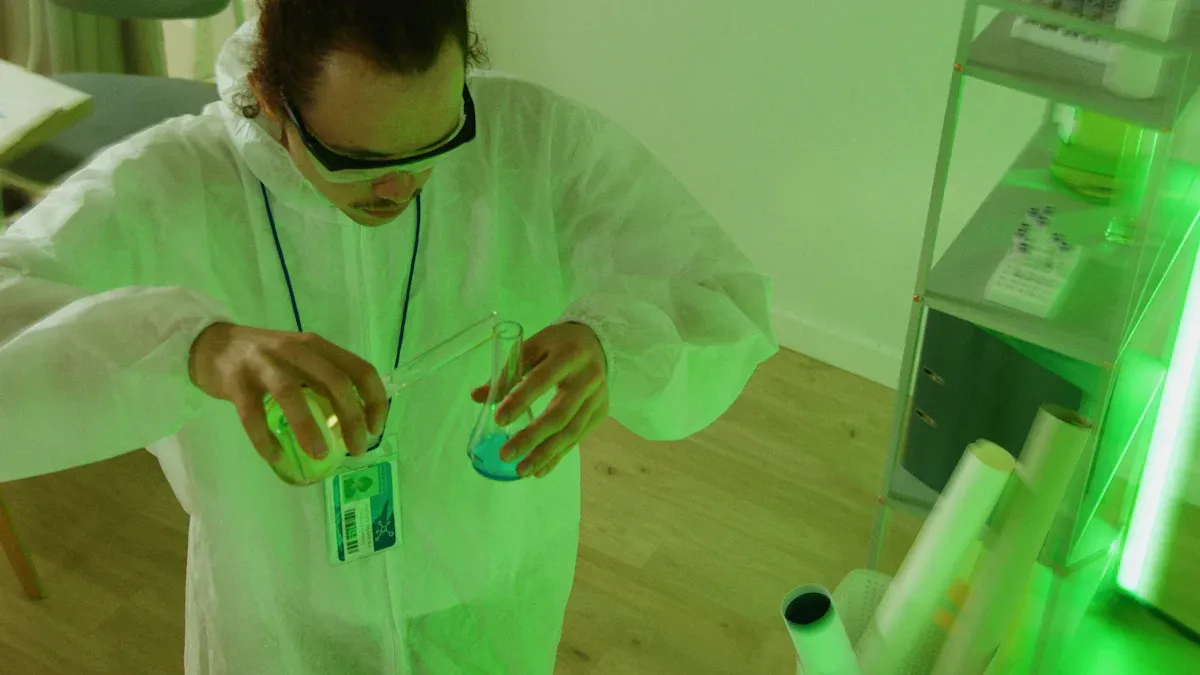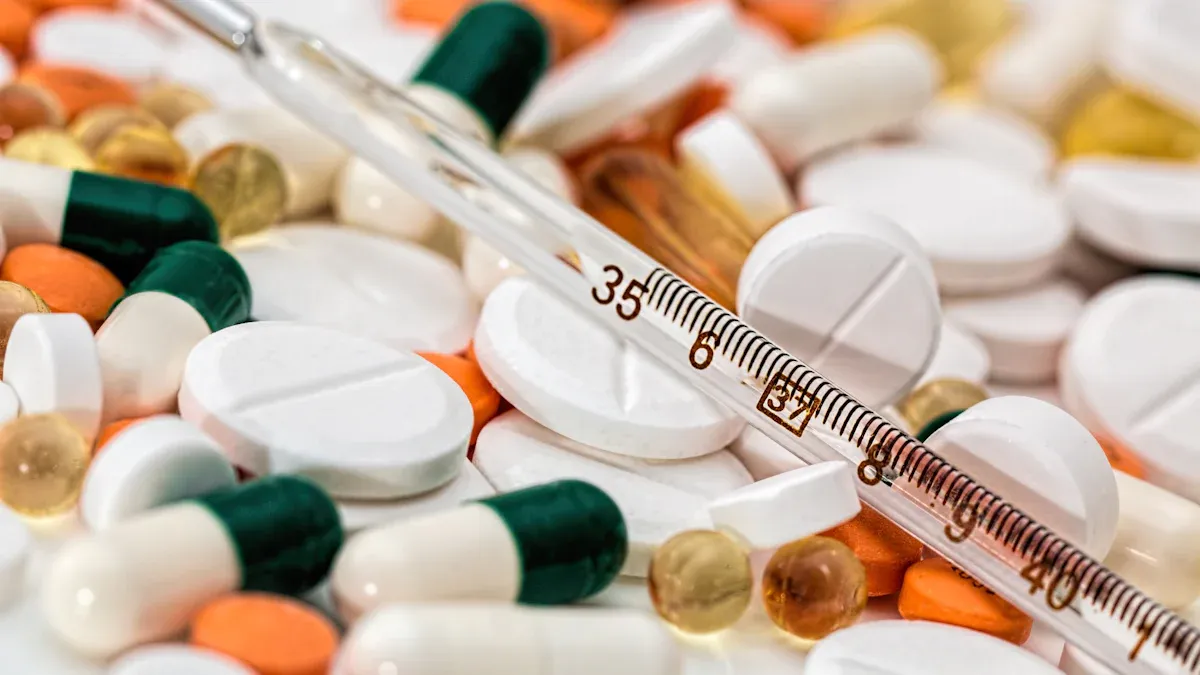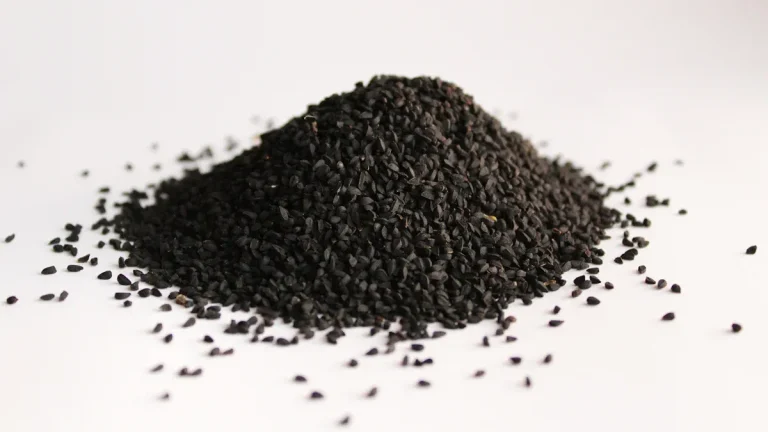
Bacterial vaginosis is a treatable condition that affects many women, and knowing how to cure bacterial vaginosis is essential for those impacted. In fact, between 23% and 29% of women of reproductive age experience this common bacterial infection every year. Understanding the symptoms is crucial for you to seek the right treatment. If you notice any unusual changes, don’t hesitate to consult a healthcare professional. Remember, recognizing the signs early can lead to effective management and a healthier future.
Key Takeaways
Bacterial vaginosis is common and treatable; seek help if you notice symptoms.
Antibiotics are effective for treatment, with ornidazole showing the highest cure rate.
Probiotics can help reduce recurrence rates; consider them alongside antibiotics.
Avoid douching and harsh products; the vagina is self-cleaning and needs balance.
Make lifestyle changes like a balanced diet and good hygiene to prevent bacterial vaginosis.
What is Bacterial Vaginosis?

Bacterial vaginosis (BV) occurs when an imbalance of bacteria in the vagina leads to an overgrowth of certain types. This condition is the most common vaginal infection among women of childbearing age. It affects approximately 36.1% of women in this group, with higher rates in those living with HIV. Understanding the symptoms and diagnosis of bacterial vaginosis is crucial for effective treatment.
Common Symptoms
You may experience several symptoms if you have bacterial vaginosis. Here are some of the most common ones:
Symptom | Description |
|---|---|
Pain, burning, or itching | Sensations in the vagina |
Burning sensation when you pee | Discomfort during urination |
Fishy smell | Odor that intensifies after sexual activity |
Thin white, gray, or green discharge | Type of discharge associated with BV |
Stomach pain | Abdominal discomfort |
Higher vaginal pH | Change in vaginal acidity |
If you notice any of these bacterial vaginosis symptoms, it’s important to consult a healthcare professional for further evaluation.
Diagnosis Process
Diagnosing bacterial vaginosis involves several steps. Healthcare providers typically rely on a combination of methods to confirm the condition:
A thorough medical history and vaginal examination.
Microscopic examination of vaginal discharge.
Amsel’s criteria, which include:
Clue cells observed on a saline smear.
A vaginal pH greater than 4.5.
Characteristic thin, gray, homogeneous discharge.
A positive whiff test in up to 70% of patients.
The vaginal Gram stain serves as the reference standard laboratory method, using a Nugent score to classify the vaginal microbiota.
Advanced molecular diagnostic methods, such as NAATs, can also be used and do not require microscopy.
Recognizing the symptoms and understanding the diagnosis process can help you seek timely treatment for bacterial vaginosis.
Causes of Bacterial Vaginosis
Understanding the causes of bacterial vaginosis (BV) can help you identify risk factors and make informed choices. Several factors contribute to the development of this condition.
Risk Factors
Certain risk factors increase your likelihood of developing bacterial vaginosis. Here are some of the primary ones:
Higher number of lifetime sexual partners
Being unmarried
Younger age at first intercourse
Self-identifying as a commercial sex worker
Regular douching
High frequency of vaginal intercourse
History of pregnancy
Cigarette smoking
Recent unprotected sex
Female genital mutilation or cutting
Recent vaginal cleansing
These factors can disrupt the natural balance of bacteria in your vagina, leading to an overgrowth of harmful bacteria.
Lifestyle Influences
Your lifestyle choices also play a significant role in the risk of bacterial vaginosis. Here’s how some common habits can affect your vaginal health:
Lifestyle Choice | Effect on Bacterial Vaginosis Risk |
|---|---|
Smoking | Increases risk by altering vaginal microbiota, reducing Lactobacillus species, and increasing pathogenic bacteria. |
Douching | Associated with dysbiosis, especially during menstruation, increasing the risk of bacterial vaginosis and Candida albicans infections. |
Observational studies show a strong link between vaginal douching and bacterial vaginosis. While douching may seem like a way to maintain cleanliness, it can actually disturb the natural balance of bacteria.
Additionally, engaging in unprotected sexual encounters with new or multiple partners significantly raises your risk of bacterial vaginosis. Reducing these encounters can help lower your chances of developing this condition.
By being aware of these risk factors and lifestyle influences, you can take proactive steps to protect your vaginal health.
Cure Bacterial Vaginosis: Treatment Options

When it comes to treating bacterial vaginosis, you have several options. Understanding these treatment options can help you make informed decisions about your health.
Medical Treatments
Medical treatments for bacterial vaginosis primarily involve antibiotics. These medications work by restoring the natural balance of bacteria in your vagina. Here are some commonly prescribed antibiotics along with their reported cure rates:
Antibiotic | Reported Cure Rate (%) |
|---|---|
Ornidazole | 97.4 |
Tinidazole | 78.4 |
Metronidazole | 69.7 |
Ofloxacin | 49 |
Secnidazole | 48.9 |
Clindamycin | 29 |
Probiotics | 22.5 |
Placebo | 5.2 |
As you can see, ornidazole has the highest reported cure rate, making it a strong option for treatment. However, antibiotics can come with side effects. Common side effects include headache, loss of appetite, and gastrointestinal issues like diarrhea. Serious side effects, though rare, can include severe allergic reactions and neurological issues. Always discuss potential side effects with your healthcare provider before starting any medication.
Tip: If you experience side effects, inform your doctor. They may adjust your treatment plan to minimize discomfort.
Home Remedies
In addition to medical treatments, some people explore home remedies for bacterial vaginosis. While these remedies may offer relief, their effectiveness varies. Here are some commonly recommended home remedies:
Home Remedy | Success Rate | Evidence Level |
|---|---|---|
Boric Acid | Limited | Anecdotal claims |
Tea Tree Oil | None | No scientific evidence |
Apple Cider Vinegar | None | Anecdotal claims |
Probiotics | Unknown | More research needed |
Garlic Supplements | Unknown | More research needed |
Boric acid has shown some benefits in anecdotal reports, but more research is necessary to confirm its effectiveness. Tea tree oil and apple cider vinegar lack scientific backing, so use them cautiously. Probiotics may help maintain vaginal health, especially when combined with antibiotics. Studies suggest that probiotics can significantly reduce BV symptoms and recurrence rates compared to antibiotics alone.
Note: Always consult your healthcare provider before trying home remedies, especially if you are already undergoing medical treatment.
Preventing Bacterial Vaginosis
Preventing bacterial vaginosis (BV) involves making conscious lifestyle changes and adopting effective hygiene practices. By taking these steps, you can significantly reduce your risk of recurrence and maintain better vaginal health.
Lifestyle Changes
Making simple adjustments to your daily routine can help prevent bacterial vaginosis. Consider the following lifestyle changes:
Improve Your Diet: Focus on a balanced diet rich in fruits, vegetables, and whole grains. Reducing alcohol intake can also be beneficial.
Increase Exercise: Regular physical activity can boost your overall health and may help reduce the risk of BV.
Wear Cotton Underwear: Choose breathable fabrics like cotton to allow airflow and reduce moisture buildup. Avoid tight clothing that can trap heat and moisture.
Practice Good Hygiene: Use soap-free washes instead of scented soaps. This helps maintain the natural balance of bacteria in your vagina.
Enhance Sexual Hygiene: Before and after sexual activity, ensure you clean the genital area properly. Minimize the exchange of bodily fluids to lower your risk of BV.
By implementing these lifestyle changes, you can create a healthier environment for your vaginal flora.
Hygiene Practices
Your hygiene practices play a crucial role in preventing bacterial vaginosis. Here are some recommended practices:
Hygiene Practice | Association with BV Prevalence |
|---|---|
Douching (weekly or more) | Increased risk |
Daily bathing | Increased risk |
Non-douching behaviors | No strong association |
Avoid douching and using fragranced products, as these can disrupt the natural balance of vaginal bacteria. Instead, focus on non-douching behaviors that do not elevate your risk of infections.
Additionally, consistent condom use can help protect against bacterial vaginosis. Research shows that using condoms reduces the prevalence of BV among women who are BV-negative at baseline. However, it may not have the same effect for those who are already BV-positive.
To further enhance your hygiene practices, remember to:
Change underwear promptly after sweating.
Avoid wearing tight underwear or non-breathable fabrics.
Educate yourself about maintaining vaginal health and recognizing symptoms of BV.
By following these hygiene practices, you can significantly lower your risk of developing bacterial vaginosis.
When to See a Doctor
Recognizing Severe Symptoms
You should seek medical attention if you notice any severe symptoms related to bacterial vaginosis. Here are some signs that indicate you need to see a doctor:
Changes in vaginal discharge color or consistency
Unusual odor of discharge
Symptoms like itching, burning, swelling, or soreness
If you experience these symptoms, do not ignore them. They may signal a more serious issue that requires prompt evaluation.
Importance of Professional Help
Getting professional help is crucial for managing bacterial vaginosis effectively. Untreated bacterial vaginosis can lead to serious complications. These complications include:
Endometritis and salpingitis
Pelvic inflammatory disease
Risks during pregnancy, such as premature labor and postpartum endometritis
If you have vulvovaginal symptoms, especially a thin, grayish discharge with a fishy odor, you should be evaluated for bacterial vaginosis. Medical professionals can diagnose the condition using specific criteria, such as:
Homogeneous, thin, white discharge that coats the vaginal walls
A vaginal pH greater than 4.5
More than 20% clue cells on saline microscopic examination
Healthcare providers play a vital role in managing recurrent bacterial vaginosis. They can help you understand your symptoms and recommend appropriate treatments. Additionally, they can educate you on behavioral changes to prevent recurrence, such as proper cleaning methods for sex toys and avoiding certain sexual practices.
Remember, seeking help early can prevent complications and improve your overall health. If you suspect you have bacterial vaginosis or experience any severe symptoms, don’t hesitate to reach out to a healthcare professional.
Bacterial vaginosis is a treatable condition, and you should not hesitate to seek help if you notice any symptoms. Remember, timely treatment can prevent complications and improve your health. Here are some key takeaways:
Antibiotics, whether pills or creams, effectively treat bacterial vaginosis.
New research highlights the importance of probiotics, like Lactobacillus crispatus, in reducing recurrence rates.
Avoid myths about vaginal hygiene; the vagina is self-cleaning, and harsh products can disrupt its balance.
Stay informed and proactive about your vaginal health. If you experience any unusual symptoms, consult a healthcare professional for guidance.
FAQ
What causes bacterial vaginosis?
Bacterial vaginosis occurs when the balance of bacteria in your vagina shifts. Factors like multiple sexual partners, douching, and smoking can increase your risk.
How is bacterial vaginosis diagnosed?
Healthcare providers diagnose bacterial vaginosis through a medical history review, vaginal examination, and tests like a saline smear or vaginal pH measurement.
Can bacterial vaginosis affect pregnancy?
Yes, bacterial vaginosis can lead to complications during pregnancy, such as premature labor and postpartum infections. Consult your doctor if you are pregnant and experience symptoms.
Are there any long-term effects of untreated bacterial vaginosis?
Untreated bacterial vaginosis can lead to serious complications, including pelvic inflammatory disease and increased susceptibility to sexually transmitted infections. Seek treatment if you notice symptoms.
How can I maintain vaginal health?
To maintain vaginal health, practice good hygiene, wear breathable fabrics, avoid douching, and consider a balanced diet. Regular check-ups with your healthcare provider also help.


